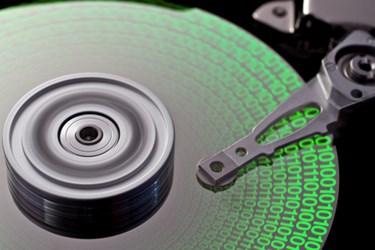Will The SSD-HDD Debate Continue Into 2015?
By Rick Delgado, contributing writer

If anyone thought the debate surrounding different storage types was going to be settled anytime soon, they’ll likely be sorely disappointed. 2014 was an exciting year as the debate between solid-state drive (SSD) and hard disk drive (HDD) grew ever more heated as both sides of the argument made their case for which form enterprises should favor. As 2015 begins, the debate doesn’t look to be letting up. If anything, it’s only going to get more intense as new technologies and strategies come to the forefront while opponents continue to tout flash storage or hard drives. A close look at what 2015 may have to offer reveals an intriguing glimpse at what businesses can expect.
One particular point of emphasis in the flash storage debate from the very beginning has been the competing values of performance versus capacity. Generally speaking, solid-state drives provide better performance while hard disk drives offer more capacity at less cost. This appears likely it will hold true through 2015, but the gap between the two storage types in terms of capacity might be closing. Many experts agree that HDD has already reached its peak performance while SSD is still increasing in that regard. Flash storage is also delivering greater storage capacities, eliminating some of the need for companies to invest in hard disk drives. That higher capacity has benefits beyond simply being able to do more with less. Fewer hard disk drives mean less power consumption, which in turn means a lower energy bill for enterprises that require large amounts of storage. Higher capacities may also make the cost difference between SSD and HDD not as much of an issue.
All of these increases in performance and capacity are possible through new technological breakthroughs developed by major tech companies like Intel and Samsung. New developments like triple-level cell flash and multi-level cells create more storage space on a solid-state drive while also taking up less physical space. As these technologies mature, they will become more mainstream and more widely available for use by businesses. But flash storage isn’t alone in its technological developments. Breakthrough techniques for hard disk drives have also been achieved, from Shingled Magnetic Recording to Two-Dimensional Magnetic Recording, providing even higher capacities for enterprises at cheaper costs. It’s safe to say that both storage types will continue ramping up development over the course of the year to remain competitive with each other.
A number of trends in technology are also adding fuel to this evolving debate. In the past year we’ve seen a massive increase in the amount of data being generated and processed. At the same time, concepts like the Internet of Things have taken off, also leading to more data. The Big Data trend, along with more demand for cloud computing, has made it necessary to store massive sets of data, which has lead companies deep into the debate. While businesses have noted the benefits that flash storage and hard drives offer, many have chosen to go with support for hybrid arrays, essentially combining many of the advantages of the two forms. With price such a barrier to investing in all-flash arrays, hybrid arrays can represent a happy medium that takes into account cost, capacity, and performance. But it’s also true that without flash, many industries would not be able to move into Big Data and cloud services. While enterprises may use hybrid arrays, as time goes on, they will likely show a preference toward flash storage.
Movement toward solid-state drives will most likely continue well into 2015. Already, more and more companies are using flash for archiving purposes — a task normally performed by hard disk drives. This is mainly occurring because archived data is now being accessed more often than ever before for analytics purposes. Perhaps most promising is how flash storage is changing the data center. By including flash storage and upgrading existing infrastructures, businesses can provide customers with applications that offer faster response times. In fact, flash storage is quickly replacing HDD when it comes to high-tier applications for that very reason.
While it may seem like everything is trending in the direction of flash storage, that doesn’t mean hard disk drives are going the way of vinyl records. HDD will likely always have a place at the enterprise level, especially with its overall cost being so low. Flash storage, however, will continue to become more viable as companies take advantage of its versatility. The future looks bright for flash storage, and 2015 may become another banner year.
